By John W. Osborn, Jr.
When world war engulfed Europe for the second time in a generation, the Netherlands placed its faith in the diplomatic delusion that it could remain neutral like it had during World War I. When that failed it counted on a military miracle that turned out to be a mirage. The price would be paid first in five days, then for five years.
The imminence of war with the signing of the Nazi-Soviet Non-aggression Pact did not make Dutch Prime Minister Dirk Jan de Geer disturb his vacation until the cabinet back in The Hague demanded that he return for the crisis. “Do you think the situation is really as bad as the newspapers say?” he asked his fellow passengers on the train home.
In fact, it was not.
It was worse.
“The Dutch hope that they would be by-passed by the German right-handed swing as in the former war was in vain,” Winston Churchill was to write. Where the Dutch were thinking of neutrality Hitler had already decided on neutralizing the Netherlands.
“It is imperative for England that the war should be brought as near to the Ruhr as possible,” Hitler informed his generals during his secret speech to them on May 23, 1939, announcing his intention to launch a war with Poland and, if necessary, Great Britain and France. “Declarations of neutrality must be ignored…. Therefore, if England intends to intervene in the Polish war, we must occupy Holland with lightning speed.”
The Dutch did not even protest when a German magnetic mine sank a Dutch passenger steamer with 83 lives lost and instituted strict rationing. Perhaps in a pointed reminder that she granted asylum to the kaiser after World War I, Queen Wilhelmina was the only foreign leader not allied to Hitler to congratulate his escaping an assassination attempt. But, for Hitler, Holland had surrendered any claim to neutrality when a Dutch intelligence officer escorted two British agents to the border to meet Germans plotting to overthrow him.
The meeting was an SS deception and trap. The British were kidnapped, the Dutch officer killed. “When the time comes,” Hitler later told his generals, “I will use all this to justify my attack. The violation of Dutch neutrality is unimportant. Nobody asks about such things after we have won.”
De Geer and the government, except the defense minister and the queen, tried to act as if ignoring the problem would make it go away, even as Dutch intelligence reported the Germans were massing troops and supplies along the border, laying out pontoons that could only be used to ford the Rhine, and smuggling Dutch uniforms for the army, police, railway, and postal services into Germany. In Berlin the long-serving military attaché, Major Gijsbertus Jacobus Sas, warned, “This time we will not escape.” He would have the unlikeliest ally in his efforts.
Colonel Hans Oster of the Abwehr, one of Hitler’s most committed enemies in the military, had known Sas since 1932. “My dear friend,” he told Sas, “you are right. This time Holland’s for it too.” To prove it he passed on Hitler’s actual order to attack.
But in The Hague, Sas’s credibility suffered from a reputation for nervousness, and as 18 dates for attack came and went it became easy to dismiss Sas as a dupe of German disinformation. “I don’t believe a word of it,” Dutch Commander-in-Chief, General Izaak Rejinders said, preferring the assurances from the German attaché to The Hague and even ordering the warnings be kept from the defense minister and the queen.
The Dutch at least made the gesture of building up their military “to avoid any temptation to invade,” Foreign Minister Eeclo van Kleffens explained, but it had the opposite effect on Hitler. Though the army was increased to 270,000 troops, it had no tanks and only 170 obsolete aircraft. It was so short on supplies that the men were rationed a trio of grenades, and conscripts were advised to bring their own boots.
A century of peace had left the Dutch Army with few professional officers. In February 1940, General Henri Winkelman was brought back from retirement as the new commander-in-chief to face the world’s most powerful army without a day’s experience commanding troops in action in his life and having to rely on a military miracle for his only hope to defend Holland.
On the evening of May 9, 1940, in Berlin Sas and Oster were having dinner, “a funeral banquet,” Sas would later describe it, four days after Hitler had issued his 19th attack order. “There’s still a chance the thing will be postponed,” Oster said, and at 9:30, the final deadline for the attack to begin, they drove to Army headquarters and Oster ran in.
Just 15 minutes later he came out as fast.
“This is really it,” Oster, out of breath, told Sas. “No orders have been countermanded. The swine has left for the Western Front—this is finally it.”
They shook hands, Oster expressing the hope they would meet after the war. (They would not—Oster was executed in 1945.) His last words were, “Sas, do me a favor and blow the bridges!”
Sas rushed to his embassy to place a call to the War Ministry at The Hague. “I’ve got only one thing to tell you. Tomorrow morning, at daybreak, watch it!”
Still, skepticism about him lingered and in 90 minutes the head of the Dutch secret service clumsily called back.
“I’ve received such bad news about your wife’s operation.” Sas was a bachelor.
“So sorry to hear about it. Have you consulted all the doctors?”
Knowing that Germans were certain to be listening in, Sas, struggling to keep himself under control, answered, “Yes, and I can’t see why you are bothering me in the circumstances. It’s set for daybreak tomorrow.”
Sas slammed the phone down.
The once complacent Prime Minister de Geer and the cabinet spent Holland’s last night of peace and freedom for five years gathered in Foreign Minister van Kleffen’s study behind shuttered windows.
At 4:00 am, May 10, 1940, came the drone of incoming aircraft. All Dutch planes had been ordered grounded.
“Hell burst loose upon us,” van Kleffens would say.
The invasion started almost an hour later. The Dutch had wired numerous bridges across the Rhine with explosives that were to be detonated in case of a German attack. A sergeant in charge of one the bridges spanning the Rhine along Holland’s fateful border with the Ruhr was surprised to see a pair of Dutch policemen bringing a group of German soldiers —unarmed, hands up, heads down—out of the dim dawn.
“I’m bringing back some prisoners, sergeant. We nabbed these men in our sector.”
“Without weapons?”
“They threw them away. We left them in a pile on the ground. There were too many. Rifles, ammunition, grenades, a real pile. They will have to be picked up.”
The sergeant assumed they were deserters. Suddenly, one of them grabbed him by the throat while the others brought weapons out from under their greatcoats. The other pair of Dutch guards was quickly overpowered, the wires to the explosives cut, then the German “deserters” waited to rejoin their Army as it rolled past them into the Netherlands.
At another bridge Dutch guards were puzzled at the approach of fellow Dutch from the German end. As the guards moved back, one of the approaching soldiers shouted in perfect Dutch, “Halt! Where is your commanding officer?”
The guards hesitated and stopped. Then, as the soldiers moved in front of them the guards were seized and disarmed. Another guard rushed to blow the bridge but was brought down, shot in the legs.
Other guards were shouting not to shoot. The leader of the “Dutch” soldiers, a German lieutenant in disguise, cut the wires to the bridge’s explosives.
“That’s it! We’ve got it!” Then Dutch fire erupted from their far end.
“Don’t do anything stupid, men, or you are done for!” The guards quickly surrendered.
“There must be some means of getting those bridges into our hands,” Hitler had said. The answer was the Brandenburgers, a unit specializing in stealth.
Hitler approved. “In wartime, a uniform is always the best camouflage,” he remarked. “But one thing is vital—the leaders must be the spitting image of Dutch as far as language, dress, and behavior go.”
The lieutenant had learned Dutch, but many did not have to. They were in fact Dutch, members of a prewar Nazi movement. “We do not want to harm the Netherlands,” they claimed. “We are all of Germanic blood.”
Colonel Oster’s hopes were dashed as most of the bridges were captured easily. One was blown. At another the Brandenburgers were the ones captured. “Here everybody knows everyone else,” the Dutch officer explained as their attempted ruse, led by a traitor, failed. “”The same company has been in the garrison town for two years.”
One of the few German casualties was later tended by a Wehrmacht doctor. “There’s not much left of your company.”
“Company? There were nine of us.”
“Impossible!”
“We are the Brandenburgers!”
With their diplomatic delusion gone, the Dutch now put their hope in the military miracle of Fortress Holland, flooding almost a quarter of the country and then holding out behind the wall of water until Allied help came. “Mr. Cojin, when as Dutch prime minister he visited me in 1937, had explained to me the marvelous efficiency of the Dutch inundation,” Churchill would write. “He could, he explained, by a telephone message from the luncheon table at Chartwell, press a button which would confront an invader with impassable water obstacles. “But,” Churchill went on, “this was all nonsense.”
Churchill, just having become prime minister, met a delegation of Dutch ministers flown in from Amsterdam. “Haggard and worn, with horror in their eyes,” he described them, “even with the recent overwhelming of Norway andDenmark in their minds, the Dutch ministers seemed unable to understand how the great German nation, which, up to the night before, had professed nothing but friendship, should have suddenly made this brutal and frightening onslaught.”
The Dutch were overwhelmed too quickly to put Fortress Holland into effect.
“The avalanche of fire and steel had rolled across the frontiers,” Churchill recorded. “The country was in a state of wild confusion. The Germans broke through at every point, bridging the canals or seizing the locks and water controls. In a single day all the outer line of the Dutch defenses was mastered.”
Behind the Brandenburgers the German 18th Army poured into the Netherlands. Hitler expected a one-day walkover like Denmark, ordering, “Where no opposition is encountered, the invasion is to be given the character of a peaceful occupation.”
The commander of the division tasked with the capture of The Hague rode in his dress uniform, expecting an audience before noon with Queen Wilhelmina. Fortress Holland, besides having no walls, was proving to have no roof. Most of the Dutch air force was swiftly destroyed on the ground, and 4,000 paratroopers rained down across Holland in history’s first airborne invasion.
“As if by magic,” a Dutch officer recalled, “white dots suddenly appeared like cotton wool. First there were 20, then 50, then over 100 of them!”
“It is imperative that we should succeed,” the paratroopers’ commander, Maj. Gen. Karl Student, said. “A failure by us would have led to the failure of the entire offensive.” But, getting over their initial confusion and confounding Hitler’s expectations, the Dutch began to resist, and the paratroopers’ attempt to capture the campaign’s main targets, The Hague and ill-fated Rotterdam 15 miles to the northwest, ended in temporary failure.
The main airfield at The Hague was successfully captured but proved useless—the ground was too soft as the first transports flying in reinforcements got stuck and further landings had to be called off.
The paratroopers missed two other airfields by miles, and the first transports to arrive were shot out of the sky. The Germans were to lose 167 of 450 transports in the campaign. Then the Dutch counterattacked. The German division commander had his dress uniform splattered with blood from his wounds, and 1,000 paratroopers were taken prisoner. The once confident hunters shipped out that night to ignominious captivity in Great Britain.
The paratroopers arriving over Rotterdam’s Waalhaven Airport jumped at just 450 feet for maximum surprise. “Things went just as we had expected,” their leader, Lt. Col. Dietrich von Choltitz, proudly recalled. “The sound of conflict was deafening: the howling of aero-engines and ammunition exploding in the hangars was joined by the crash of mortar fire and the rattle of machine-gun fire plugging the planes. Speed was the thing!”
A dozen paratroopers came to a horrific end, descending helplessly into the burning hangars; it was over in just 15 minutes. A Dutch officer recalled it less proudly: “For us it was the end. Our last resistance was broken. The survivors of our brave Queen’s Grenadiers put up their hands and were taken prisoner. More and more aircraft were coming in to land. Waalhaven belonged to the enemy.”
Student flew in with 1,200 reinforcements, taking over a schoolhouse and directing operations from the headmaster’s elevated desk, his staff looking like “a group of overage schoolboys,” as a witness described it, working on the benches. While the crucial airport was taken from the air, the critical Willems Bridge was taken by 120 Germans riding up the Maas River in seaplanes.
Dutch factory workers on the way to their jobs thought the Germans were British and helped them up the embankment before realizing their mistake and running to spread the alarm. Soon they were cut off at the bridge under intense Dutch fire while Student was struggling to create a 15-mile corridor for the advancing 9th Panzer Division.
Through it all, a British correspondent noted, “People sit outside the cafés enjoying their drinks, while a quarter of a mile away the machine guns hammer at intervals.” But within days, the war would fall from the sky on Rotterdam in a storm of death and destruction.
With the Dutch holding on in their Grebbe Line, a now frustrated Führer was issuing Directive 11: “The power of resistance of the Dutch Army has proven to be stronger than anticipated. Political as well as military considerations require that this resistance be broken speedily.” Before it was over the Dutch drama would be played out by the retreats from The Hague of two very different princely personalities and the wrecking of Rotterdam.
King George VI was awakened inside Buckingham Palace at 5 am on May 13 and told Queen Wilhelmina wanted to speak to him. “I did not believe him [the messenger],” he later recorded in his diary, “but went to the telephone and it was her. She begged me to send aircraft for the defense of Holland. I passed on this message to everyone concerned and went to bed. It is not often that one is rung up at that hour and especially by a Queen. But in these days anything may happen.”
While the Dutch fought desperately against the Germans, another struggle was going on between their queen and government. On the throne since 1890 at just 18, Wilhelmina had always displayed the stubbornness attributed to her people. She was frustrated at the limitations of her role as constitutional monarch, constantly struggling with her ministers, almost abdicating just before the war, though proven right about the German threat.
Now she was refusing appeals to leave the country, in effect trapping the government with her. Caught in the middle was the playboy prince she had handpicked for her daughter and heiress.
The queen chose Bernhard, a prince from a tiny German state, to marry Princess Juliana in 1937, though it happily became a genuine love match.
The union was clouded by rumors—confirmed decades later—that he had been briefly in the Nazi Party and SS but would leave no doubt where his loyalties lay. Suave where the queen was stolid, he brought style to the stodgy Dutch royal family with his jet-set, as it would be later termed, lifestyle but in the end scandal when it was discovered how he had been paying for it.
Tactful where his mother-in-law was blunt, the prince had managed to persuade her earlier not to abdicate and now was trying to persuade her to escape, recognizing disaster where she saw determination. The crisis inside the palace was heightened as more Dutch traitors were sniping from rooftops, including from across the square.
Bernhard calmly aimed one of his custom hunting rifles with telescopic lens and sent one sniper falling to the street and another fleeing. But when he suggested to the queen that she was placing her daughter and two infant granddaughters at risk by staying, his maneuver, for once, backfired.
She point-blank ordered him to take them out of the country, in her customary dramatic way, vowing to kill herself if anything happened to them. They departed in a van with gold reserves from the state bank packed in the back and the crown jewels in a cardboard box. Bernhard remembered, “I was a trifle worried about having dinner in Buckingham Palace in a dirty shirt with no cufflinks.”
Their van joined a convoy taking the nation’s gold reserves out of Hitler’s hands to the port of Imjuiden, usually a 30-minute drive but taking three hours on roads jammed with refugees. Bullets from passing Luftwaffe planes bounced off the armor plating of their van while Bernhard kept his wife calm.
At the port the Dutch royals were caught up in the chaos as the Germans dive bombed and the Dutch brawled over boats. In the meantime, with 165 million guilders of gold at stake, the state bank representatives and the steamship company haggled over the difference of 85,000 in the price the bank had authorized to pay and the amount the company wanted to charge to rent them two freighters.
The company finally got the price it wanted. While the gold was inventoried again before loading, another priceless cargo arrived—the industrial diamond reserves from Amsterdam. British agent Montague Chidson had spent 24 nerve-wracking hours working the combination to the vault in the diamond market and got out with the diamonds just as the Germans were coming in after them.
Soon Queen Wilhelmina arrived. The discovery of a German plot to kidnap her had finally persuaded her to leave, but only for The Hague. Still intending to stay and carry on the struggle, she boarded a British destroyer bound to join Dutch forces on Zeeland. But it was under intense Luftwaffe assault, and she reluctantly sailed for England.
It was midnight before gold, diamonds, Bernhard and the princesses were finally ready to sail. Bernhard and Juliana were taken out by ferry to the British destroyer Codrington under air attack. Future Queen Beatrice and her sister were too young, luckily, to comprehend and slept soundly. The danger was still not over as a German magnetic mine was dropped and exploded scarcely 100 yards away.
A long, despairing day had ended for Queen Wilhelmina, beginning five years of exile and meeting King George VI for the first time at London’s Liverpool Station.
“She was naturally very upset,” commented the king in one of the Dutch campaign’s two great, tragic understatements.
The other was the next day. The commander of the German Eighteenth Army ordered the commander of the 9th Panzer Division “to break the resistance of Rotterdam by every means.” The means would be one of the most infamous acts of World War II.
“Which Rotterdammer cannot remember that day?” a survivor would write of May 14, 1940. “It was a beautiful spring day…”
By then just 60 Germans were still left holding the Willems Bridge and an air attack was coming.
“Goering and I spent hours of heated argument over the phone as to how the attacks demanded were to be carried out, if at all,” the Luftwaffe commander for the campaign, General Albert Kesselring, was to recall. “As a result I repeatedly warned the bomber wing commander to pay particular attention to the flares and signals displayed in the battle area and to keep in constant wireless contact with the Air-Landing Group. Our anxieties were increased because after Student’s morning message our wireless communications were cut off so that Air Command was no longer informed of what was happening in and around Rotterdam; there was the additional danger of dropping bombs on our own troops.”
The attack was set for 3 pm. At 10:40, in a last-ditch attempt to avoid it, a pair of German officers crossed the lines under a white flag with an ultimatum from German General Rudolf Schmidt, commander of ground forces poised to strike Rotterdam, for the Dutch commander, Colonel Phillip Scharoo. It was almost pleading in tone for surrender, warning that his order and continued resistance “could result in the complete destruction of the city. I beg you, as a man with a sense of responsibility, to take the necessary steps to prevent this.”
Blindfolded, the Germans were driven by circuitous route to Scharoo’s underground headquarters. “We had a long and agonizing wait,” one remembered, “well aware that precious time was ticking away.”
Scharoo took two hours to see them. Saying he required authorization from Commander-in-Chief Winkelman at The Hague, he sent them back to report he would send his own emissary at 2 pm.
Ten minutes early, a Dutch captain appeared to confer with von Choltitz in an ice cream parlor. But Winkelman and Scharoo were confident they were holding Rotterdam, and to buy time they replied to the Germans that Schmidt’s communication had been incorrectly made out. “Before such proposal can be seriously considered,” was the Dutch response, “it must carry your name, rank, and signature.”
When Schmidt received this nonresponse, it was already 2:15, though as far as he knew the bombing mission had been postponed. He dutifully redid his ultimatum by hand, not bothering to have it typed, closing, “I am compelled to negotiate swiftly and must insist that your decision is in my hands in three hours.”
But unknown to Schmidt, it was already too late. His message for postponement had been held up by the communication problems Kesselring was worried about. On schedule, at 2 pm, 100 Heinkel He-111 bombers of the 54th Bomber Group, Luftflotte 2, had taken off for the hour-long, 200-mile flight for Rotterdam.
There was still one hope. “Just before take-off,” the leader of the first wave remembered, “we received from operations headquarters on the telephone that General Student had radioed that the Dutch had been called upon to surrender Rotterdam. On our approach we were to watch out for red Very lights.
Should they appear we had orders not to attack Rotterdam, but the alternative target of two English divisions at Antwerp.”
Schmidt’s actual parley message only reached the Luftflotte 15 minutes after takeoff. With the bombers tuned to the Army’s frequency, the operations officer flew in a Me-109 to try to stop them.
It was the fateful hour of 3 pm, May 14, 1940, when the Dutch captain left Schmidt’s new ultimatum. “The tension was appalling,” von Choltitz remembered. “Would Rotterdam surrender in time?” In the distance the drone of approaching aircraft was suddenly heard.
The noise grew louder. Desperately, dozens of Vey lights were shot into the sky. “Though there were no clouds in the sky, it was unusually misty,” the first wave leader later said.
Suddenly, he just caught sight of two barely visible flares. His wave pulled away, but the second, not seeing the flares, began their bombing run. “The approach is like a maneuver, quiet and secure,” one pilot recalled. “The planes are searching systematically for their targets.” Some 158 500-pound and 1,150 100-pound bombs, 97 tons, proceeded to rain across the center of Rotterdam.
“My God!” Schmidt exclaimed while Student watched in horror, “It’s going to be a catastrophe!”
“We hear only the frightening drone of the endlessly returning airplanes and the shrieking and explosions of the bombs all around us,” a 20-year-old student remembered.
The city hall, post office, railway station, and business district were flattened. Worse, a margarine factory exploded, spewing burning oil and igniting the old timber houses in a massive conflagration. “Soon the center of Rotterdam is burning in many places,” a bomber pilot recalled. “Within a few minutes the center is enveloped in dense black and sulphur-yellow clouds.”
When it was over, 80,000 were left homeless and it would be three months until the last embers died out. “A splendid picture of invincible strength,” the German pilot smugly called it.
The world saw it differently. An erroneous report that 25,000 were killed shocked the world, and the bombing was condemned as a deliberate terror attack. The Germans answered that Rotterdam was never an open city. The high explosives dropped were not designed to cause fire.
“One of those unforeseeable coincidences of war which, I am sorry to say, occur in the armed services of all countries more frequently than one might think,” Kesselring would, with embarrassment, call it.
After the war the Dutch themselves put the death toll at 814. At Nuremberg, where Göring was charged with the bombing, the analysis given to the judges concluded, “This sort of mistake was so common throughout the war because of the difficulty of air-ground visual and radio communications that his explanation must be accepted as true in the absence of conclusive proof that the attack was completely political.” The judges in the end said nothing in a sort of backhanded acquittal.
A broken Scharoo arrived two hours later to surrender. Schmidt consoled him. There was no sense of celebration among the Germans. “A young paratrooper grasped the flag he and his comrades had displayed to identify themselves to the bombers,” von Choltitz later wrote. “He came up like a lost soul…. The survivors were dirty and worn. Together we take over the burning city.”
Another military mistake led to the last German casualty in the battle for Rotterdam. Waffen SS troops entering the city encountered Dutch troops milling about, waiting to turn in their arms, and instantly fired on them. Trying to stop the shooting, Student himself fell with a bullet to the head. An operation that night performed by a Dutch surgeon barely saved his life.
With the Dutch reeling in shock and their defenses crumbling under the weight of the relentless assault, General Winkelman signed Holland’s surrender at 9:30 am on May 15, 1940.
Dutch casualties had been 4,600 military personnel and civilians killed and 2,700 wounded. “The power of a great State against a small one under modern conditions is overwhelming,” Churchill was to write of the Dutch. For her part Queen Wilhelmina was never in doubt about the final outcome, saying, “In due course, with God’s help, the Dutch people will regain their territory.”
The queen’s radio broadcasts to the Dutch kept hope alive and stiffened their resolve, and she was able to dislodge discredited Prime Minister van Geer and effectively run the government-in-exile. At her side Prince Bernhard ably organized the resistance, commanded what free Dutch forces there were, flew missions with the RAF, and was a much appreciated buffer between his mother-in-law and the Allies.
“It was hard on the nerves to be in the midst of a population that had only hatred and contempt for us,” a German soldier in Holland said.
Queen Wilhelmina returned to the Netherlands in May 1945. Her hopes to play as important a political role back home as she had in exile were quickly dashed. Disappointed and frustrated, in 1948 she finally abdicated, claiming ill health (she lived until 1962) and starting a tradition of royal retirement from the throne to be followed by her daughter and granddaughter.
Prince Bernhard left public life in 1976, but in disgrace when it was finally found out how he had been living so well beyond his princely payment. As Inspector General of the Dutch Armed Forces, he had accepted $1 million in bribes for foreign contracts.
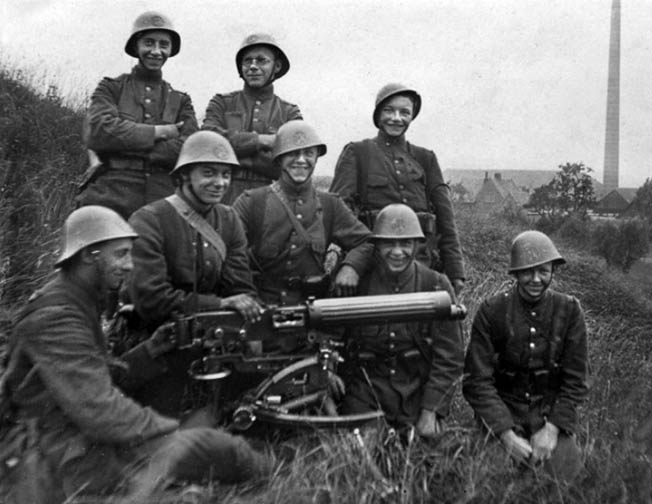
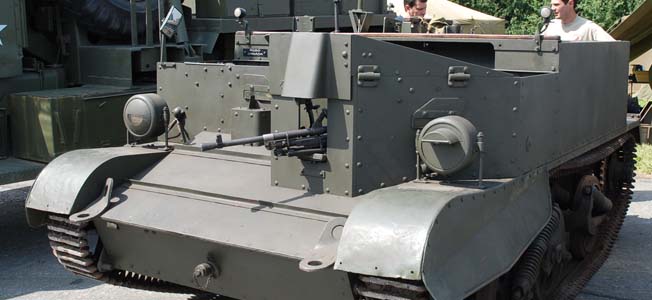
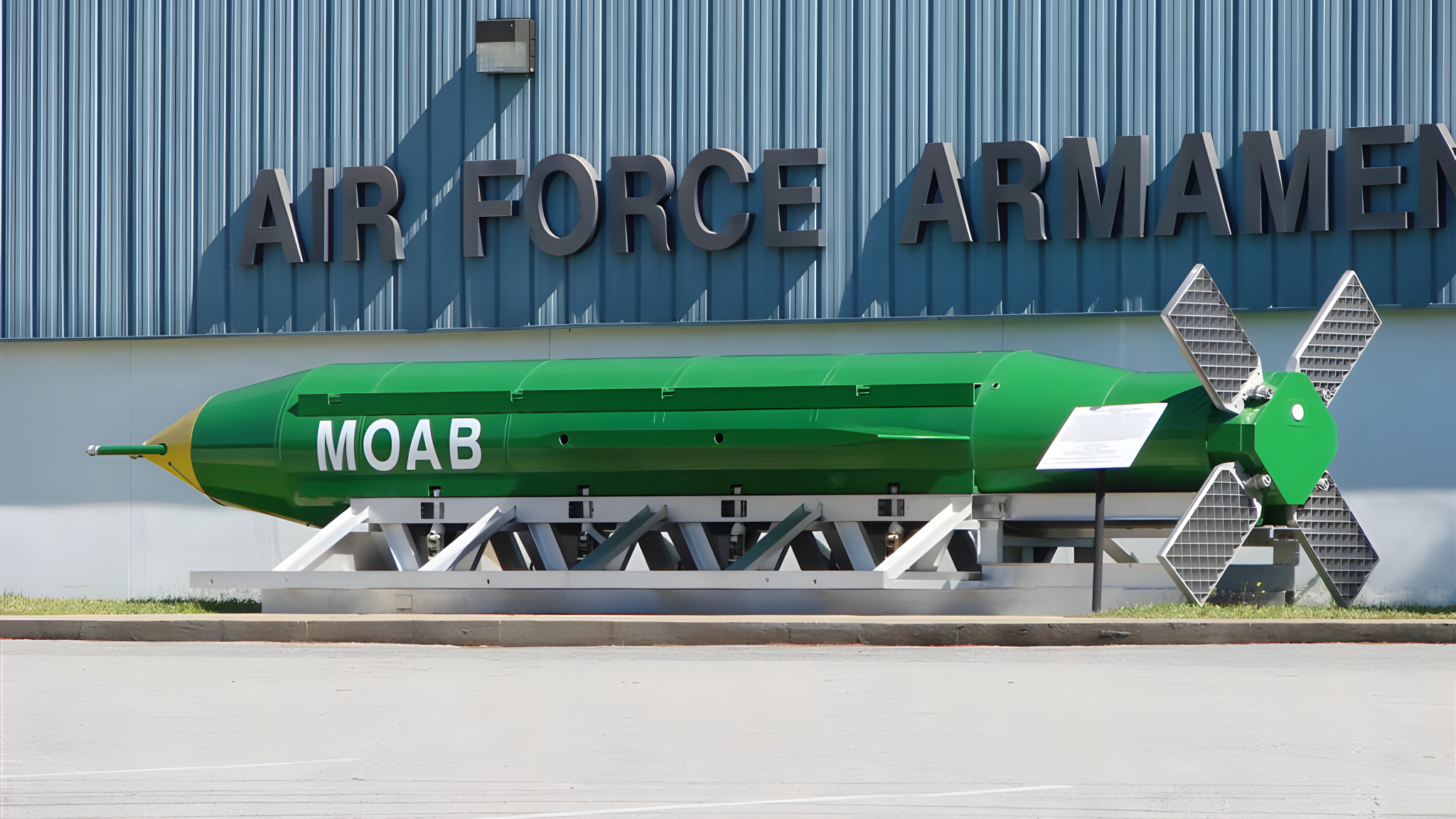
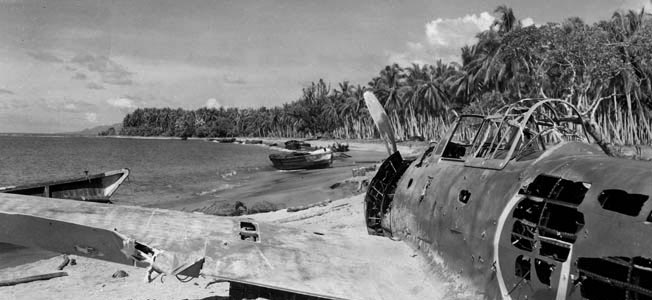
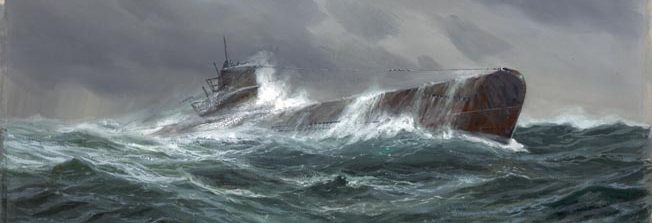
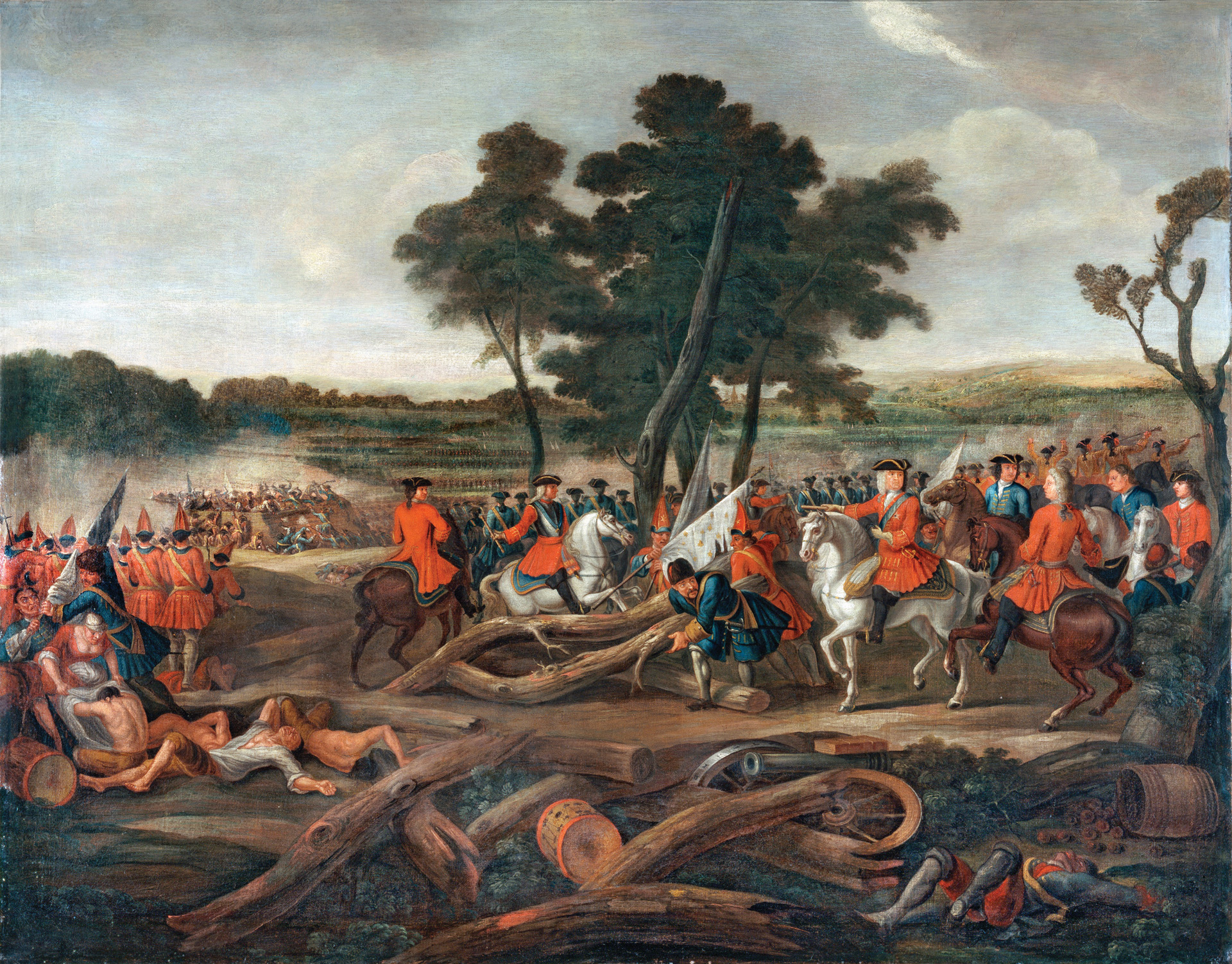
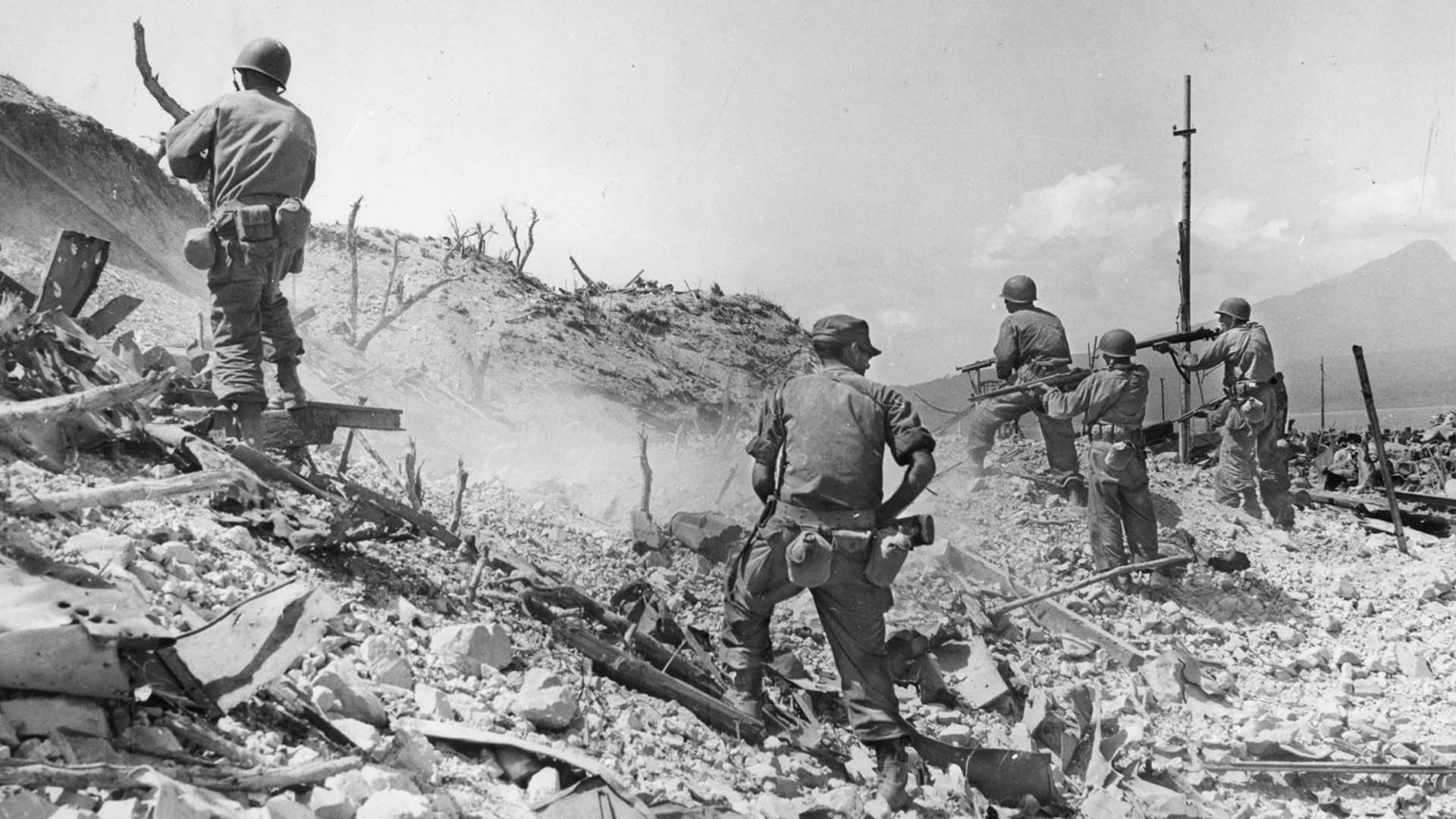
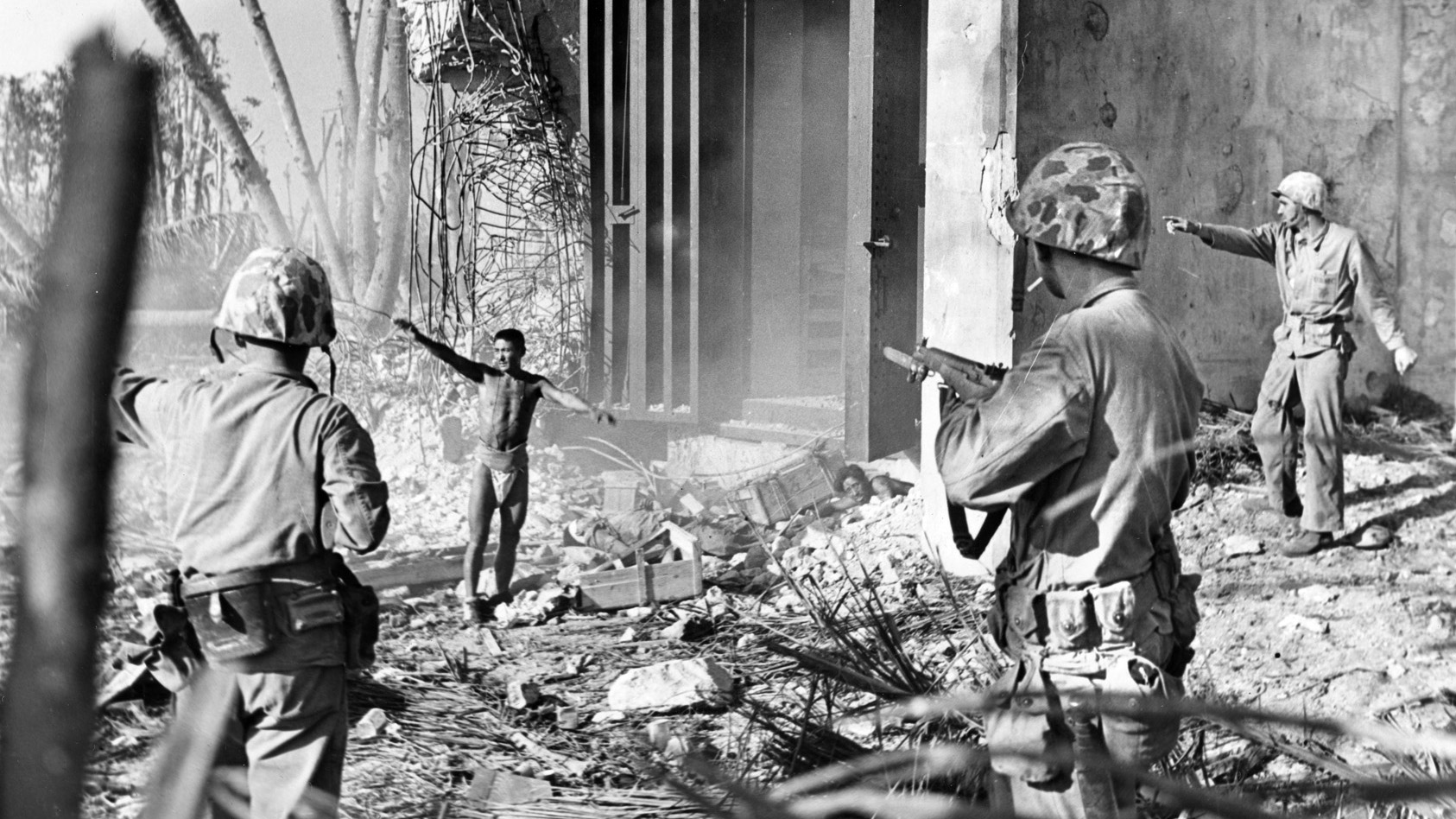
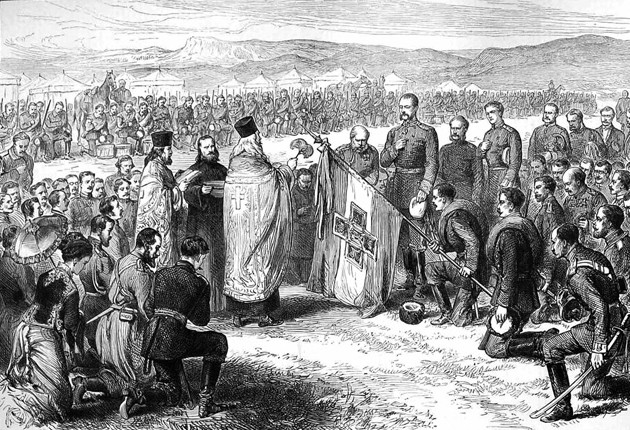
It should be noted that there were no real natural defensive borders along the Dutch East. My grandmother lived on the German side before the war and said that going to the Netherlands was a simple matter of a one hour trip. Even the languages were similar as Low German was easily understood.